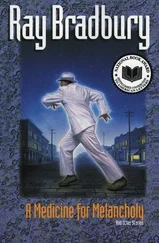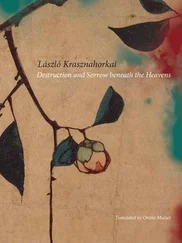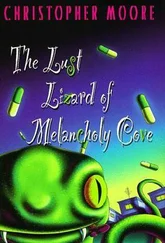Chapter 2. IN THE PRISON OF THE HUMORS
The Aristotelian hypothesis concerning melancholia was ominous in spite of its attempt to hold the extremes in check with the moderating force of the middle. The example of melancholics shows that they turn away from the world, and all the fixed achievements of civilization become questionable for them, whereas their indisputable capacities for learning and astuteness make them solitary and withdrawn. Not surprisingly, melancholia evoked in part envy and in part contempt from ordinary people, and the Aristotelian hypothesis itself ended up in the parentheses of that dual judgment. The sign of that contempt was a scoffing that dismissed melancholia, whereas that of envy was a striving to “tame” melancholia, to present it as a condition typical of ordinary people as well. In the age of Hellenism, some (Cicero, for instance) were either astonished by the assertion that melancholics were extraordinary individuals or they mocked it. The Stoics, for example, held melancholia to be a humdrum disease that deprived its victims of their senses. In his biography of Lysander, Plutarch used the word “melancholia” in the sense of “crazy,” while Empedocles was widely held to be half-witted. 1Seneca characteristically misinterprets Aristotle and in so doing anticipates the spirit of the Middle Ages (he credits Aristotle with the thought Nullum magnum ingenium sine mixtura dementiae fuit —“There has been no great genius without some touch of madness,” translating “melancholy” as “dementia”). The late Roman age was in agreement with the early Christians in denying that melancholics had prophetic abilities, seeing divination as the ravings of people sick with fever. Such was the opinion of a self-confident age that placed too much trust in reason: the thirst for knowledge can be satisfied within the bonds of existence. Querying the conditions of perception was therefore an unhealthy, lamentably uncalled-for endeavor. But there was no denying the fact that intellectual abilities went hand in hand with melancholia. Those abilities, therefore, in line with the democratization always associated with practical notions of knowledge, had to be made attainable by everyone . Oddly enough, attempts at curing melancholia were in the service of this way of looking at things, for if melancholia were curable, then it could be drawn into the orbit of empirical science, so its symptoms (for example, extraordinary intellectual abilities) would thereby lose their extraordinariness, and consequently all could acquire them and could be prevailed upon to come under the spell of common sense. A typical example was Aristotle’s comparing the substance of black bile to wine; Galen in the second century BCE, on the other hand, wrote that a heavy red wine could cause melancholia — and of course, drinking red wine requires no special skills. The physical signs of melancholia spring to the foreground, and they seem to lose the comprehensive cosmic-metaphysical grounding that had characterized the Hippocratic and Aristotelian notions of this condition. In the fourth century BCE, Diocles of Carystus, seeing a close connection between liver and bile, attributed melancholia to the swelling of the liver, and by the beginning of the Christian era, liver complaints were thought to be always connected with it. In Galen’s view, however, melancholia stemmed from a disorder of the hypochondrium, the upper abdomen, 2so it is easy to understand that he associated it with diseases of the gastric tract. (Kierkegaard was later to protest against this and to reject the suggestion that everyone who has a digestive disorder is suffering from melancholia.) The disorder of the hypochondrium affects the liver on the right-hand side as well as the spleen on the left, 3and Galen linked it not just with digestive ailments but also with mental disorders. Those mental complaints were later cut free from digestive ailments, but physicians continued to label mental disturbances with unknown causes as hypochondria, which is why melancholy came to be imputed to hypochondria, or imagined bodily ailments.
The spread and propagation of the explanation that melancholia has a purely physical basis is inseparable from the notion that strove to represent its “mental” symptoms as “baseless” or “unwarranted.” If a melancholic judged the world differently from a nonmelancholic, then there was not a question of some novel interpretation of existence; his thoughts were to be disregarded as mere side effects of some bodily change. The dual doctrine 4of a “pure mental problem” and “unalloyed physical change” sundered the original, indivisible unity of body and mind that had characterized the classical Greek interpretation of melancholia. Hellenism’s notion of melancholia presumed from the outset a duality of mind and praxis (body and soul) — hence, an expressly psychological or somatic explanation for melancholia (which, of course, is not to say that the two were diametrically opposed, as they have become in recent times). Duality, it seems, is the normal state of existence, and even the most comprehensive way of looking at things needs to behold its subject in that perspective. It is understandable that public opinion tried to make melancholia accessible, mundane. The most characteristic manifestation of that process was humorism as it evolved from the theory of humors, which, just by grouping people, took the edge off melancholia, for something that is classifiable in a group cannot be used to force that group apart. Humorism hypothesized closedness, which excludes the possibility of a person stepping outside his own bounds, precludes his self-transcendence, and shackles him from the outset. It is generally believed that the theory of humors can be tied to Hippocrates (before him, Alcmaeon of Croton, in the fifth century BCE, had sought the source of diseases in the body’s humors), but in truth it was only a good deal later, in the Middle Ages, that it was articulated in its definitive form. Of course, the basis for the four temperaments — choleric, sanguine, phlegmatic, melancholic — stretched back into antiquity and stemmed from the cosmic outlook characteristic of that era. The teaching about the four humors, though, was empirical in origin (Alcmaeon, Hippocrates), though not as yet unequivocally connected with the temperaments. Each of the humors had its own season, which meant that anyone suffering from an overabundance of black bile would have no complaint on entering autumn, the atrabilious season, though they might take ill in the other three seasons. Much the same applied to those suffering from congestion (they would be healthy in spring). The season of yellow bile was summer, whereas that of phlegm was winter. One thing implicit in the theory is that a humor can signify disease as well as temperament — but never a normal state of existence: anyone who is healthy throughout the whole year is not suffering from an overabundance of any humor; therefore, he is not sick and has no temperament. But can one really be human without having any temperament? Deep at the bottom of humorism there is also another way of looking at things, related to the number four. The conferring of cosmic distinction on four, a sacred number of the Pythagoreans, goes back to Empedocles. He was the first to name the four elements of the world (earth, air, fire, water) and to make the number four a basic principle of the cosmos. This number determined everything, including humankind, both its body and its soul. Empedocles was also the first to write about the four kinds of mental disposition, which in his view were the product of a mixing of the four elements (not humors). There were two kinds of school of medicine: on the one hand, an empirical school based on humorism (Hippocrates), starting from the physical reality of the body and organism and arriving, via the concept of  , at a cosmic way of looking at things. On the other hand, the school of a cosmic outlook (Empedocles) arrived at man’s physical reality from a background of examining the cosmos and the universe. The two schools differed in methodology, but they agreed in regarding human beings as part of the cosmos in both body and soul, and they considered treatment to be inconceivable without bringing the patient into harmony with the universe. That was how the empirically demonstrable four humors were given cosmic significance, and the immaterial number four, privileging the cosmos, became physical reality. The manifest connection of the two viewpoints was accomplished by the treatise On the Nature of Man , the author of which was presumed to be either Hippocrates or his son-in-law and disciple Polybus.
, at a cosmic way of looking at things. On the other hand, the school of a cosmic outlook (Empedocles) arrived at man’s physical reality from a background of examining the cosmos and the universe. The two schools differed in methodology, but they agreed in regarding human beings as part of the cosmos in both body and soul, and they considered treatment to be inconceivable without bringing the patient into harmony with the universe. That was how the empirically demonstrable four humors were given cosmic significance, and the immaterial number four, privileging the cosmos, became physical reality. The manifest connection of the two viewpoints was accomplished by the treatise On the Nature of Man , the author of which was presumed to be either Hippocrates or his son-in-law and disciple Polybus.
Читать дальше

 , at a cosmic way of looking at things. On the other hand, the school of a cosmic outlook (Empedocles) arrived at man’s physical reality from a background of examining the cosmos and the universe. The two schools differed in methodology, but they agreed in regarding human beings as part of the cosmos in both body and soul, and they considered treatment to be inconceivable without bringing the patient into harmony with the universe. That was how the empirically demonstrable four humors were given cosmic significance, and the immaterial number four, privileging the cosmos, became physical reality. The manifest connection of the two viewpoints was accomplished by the treatise On the Nature of Man , the author of which was presumed to be either Hippocrates or his son-in-law and disciple Polybus.
, at a cosmic way of looking at things. On the other hand, the school of a cosmic outlook (Empedocles) arrived at man’s physical reality from a background of examining the cosmos and the universe. The two schools differed in methodology, but they agreed in regarding human beings as part of the cosmos in both body and soul, and they considered treatment to be inconceivable without bringing the patient into harmony with the universe. That was how the empirically demonstrable four humors were given cosmic significance, and the immaterial number four, privileging the cosmos, became physical reality. The manifest connection of the two viewpoints was accomplished by the treatise On the Nature of Man , the author of which was presumed to be either Hippocrates or his son-in-law and disciple Polybus.










